Ever marveled at pine’s rich finish? Could Danish oil be its secret? Dive in to uncover this woodworking gem!

Have you been searching for a safe and non-toxic wood finish for your child’s toys or child furniture? Try Danish oil. It is less toxic than other finishes.
A few years back, I was curious about finishing my newly built pine wood dining table with this awesome Danish oil and did deep research to know its application techniques and guidelines to follow.

Now with years of experience, I’ve finished more than 15 pine wood furniture with Danish oil and able to gain excellent results with a protective finish.
Here’s what I know about, Using Danish Oil on Pine,
Using Danish oil on your pine surface will give a more durable and fine finish while enhancing the natural beauty of pine grains and reducing marks on the surface. Danish oil is easy to use and re-apply, unlike other finishes. However, since it is resistant to staining, be aware and let it dry plenty of time, before applying paint over it.
But, there’s a lot to know!
In this article, I will explore Danish oil, its applications, benefits, and drawbacks of Danish oil, how to apply Danish oil on pine surfaces, and so on.
Furthermore, I’ll share some tips necessary for a successful finish with my experiences.
Let’s jump in!

What is Danish oil?
Simply Danish oil is a wood-finishing oil. It’s not a naturally occurring oil type and is synthesized by blending natural oils, either Tung Oil or Boiled Linseed Oil.
However, it has different mixing ratios of the above ingredients in various commercially available brands.
The Danish oil is thinned with a liquid solvent such as mineral spirits in order for easy application.
Furthermore, in modern Danish oil, they add varnish or other drying agents to give harder resistance against dirt and stains.
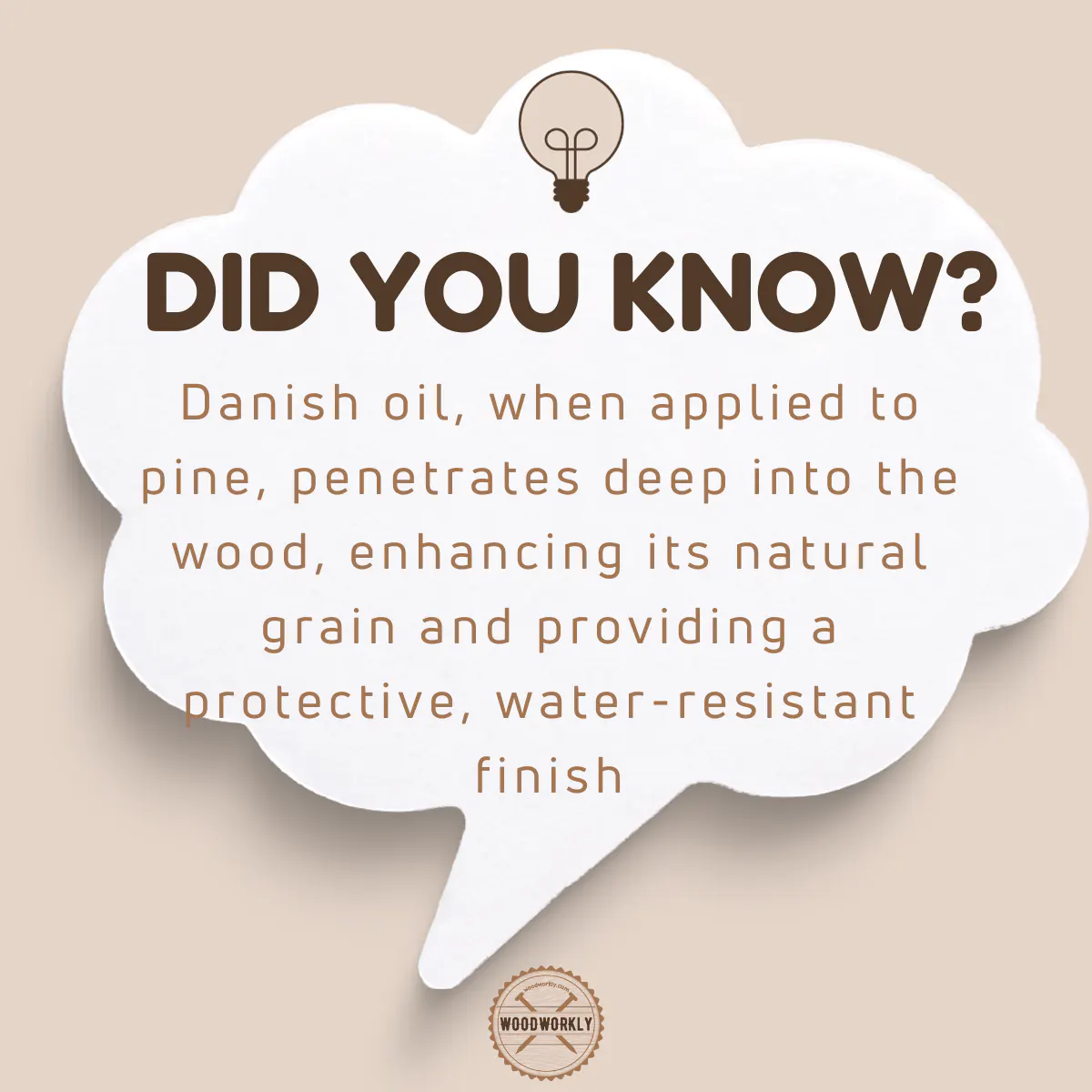
Uses of Danish oil
Danish oil is used for furniture like,
- Tables
- Chairs
- Cabinets
- Dressers
- Wooden Floors
- Kitchen Countertops
- Paneling

Can You Use Danish Oil on Pine
Yes, you can use Danish oil on pine even though it is a softwood by enhancing the wood grain appearance and at the same time can provide protection against water, staining, UV, etc.
As you can see Danish oil can protect pine wood from environmental elements while enhancing the wood’s appearance.
Make sure to apply thin even coats of Danish oil all over the pine wood surface without missing any spots for a nice finish.
Let each coat dry well before applying another to avoid wood stain mistakes.
Plus, make sure to store Danish oil properly after using it since it can go bad quite easily.

Benefits of Using Danish Oil
Here are the benefits you’ll gain by applying Danish oil on Pine wood surfaces.
Enhance the Natural Beauty
As its name implies it can give a Danish look to your furniture.
It improves the natural appearance of the wood in terms of enhancing wood grain without changing the color or texture of the lumber.
Danish oil is often free of thick varnishes and synthetic resins, giving it a more natural and matte appearance. This may be useful to people who want a less shiny appearance.
Versatility
Due to its high versatility, it can be used in a variety of wood types including softwood (e.g. pine) and hardwood (e.g. oak), and is suitable for indoor and outdoor uses.
Water and UV resistance
Danish oil can provide some protection from water, but not completely waterproof and UV radiation. And also, it protects against chemicals, heat exposure and heavy wear.
Easy to Apply
Danish oil can be applied quickly and easily by hand brush or cloths, no complicated or messy spray equipment is required.
Wood’s Breathability Maintain
This is one of the properties that I love about Danish oil. It enables the wood to breathe unlike other finishes like polyurethane while allowing penetrating the wood grain and protecting wood from moisture damage.
This is especially useful for specific types of wood and scenarios involving wood expansion and contraction.
Non-Toxic and Food-Safe
Danish oil doesn’t contain harmful additions or chemicals. Once fully cured, you can use it even with child toys and furniture.
In addition to that, they are food-safe. You can apply it to kitchen tools and furniture as well.

Now let’s focus on the Danish oil application procedure on pine wood.
How to Use Danish Oil on Pine
As I described so far, Danish oil is an excellent way to enhance the inherent beauty of pine wood while also giving some protection and durability.
It is a popular choice for finishing wood since it is simple to apply and produces a warm, natural appearance.
Here’s how to apply Danish oil on pine,
- Gather all the tools and materials
- Prepare your pine surface
- Stir the Danish Oil
- Apply the Danish Oil
- Allow penetration time
- Wipe off excess Danish oil
- Drying and curing
- Buff off (optional)
- Maintenance
Let’s talk about each step in detail.
As always, I’d like to remind you to use safety gear and choose a well-ventilated area, preferably outside or an open workplace before starting the process.
Sanding dust may harm your health and although Danish oil is less toxic, it may contain chemicals and Danish oil fumes which can be toxic to you.
Keep the oil away from children and pets.
1. Gather all the Tools and Materials.
You’ll need the following materials and tools for this process.
- Safety glasses
- Protective mask
- Gloves
- Danish oil
- Clean clothes or rags that are lint-free
- 80-120 grit Sandpapers
2. Prepare your pine surface.
If there are any existing finishes or rough places, sand the surface of the pine wood to remove any imperfections or old finish with sandpaper (80-120 grit) in a circular motion to gain a smooth surface.
After sanding, remove all dust from the wood surface and clean thoroughly with a clean, lint-free cloth or a damp cloth. And you can use a handheld vacuum for this.
If it is a greased or wax-coated surface, clean it with white spirit.
3. Stir the Danish Oil.
Use a clear stick to stir the Danish oil inside the container to make sure even distribution of components.
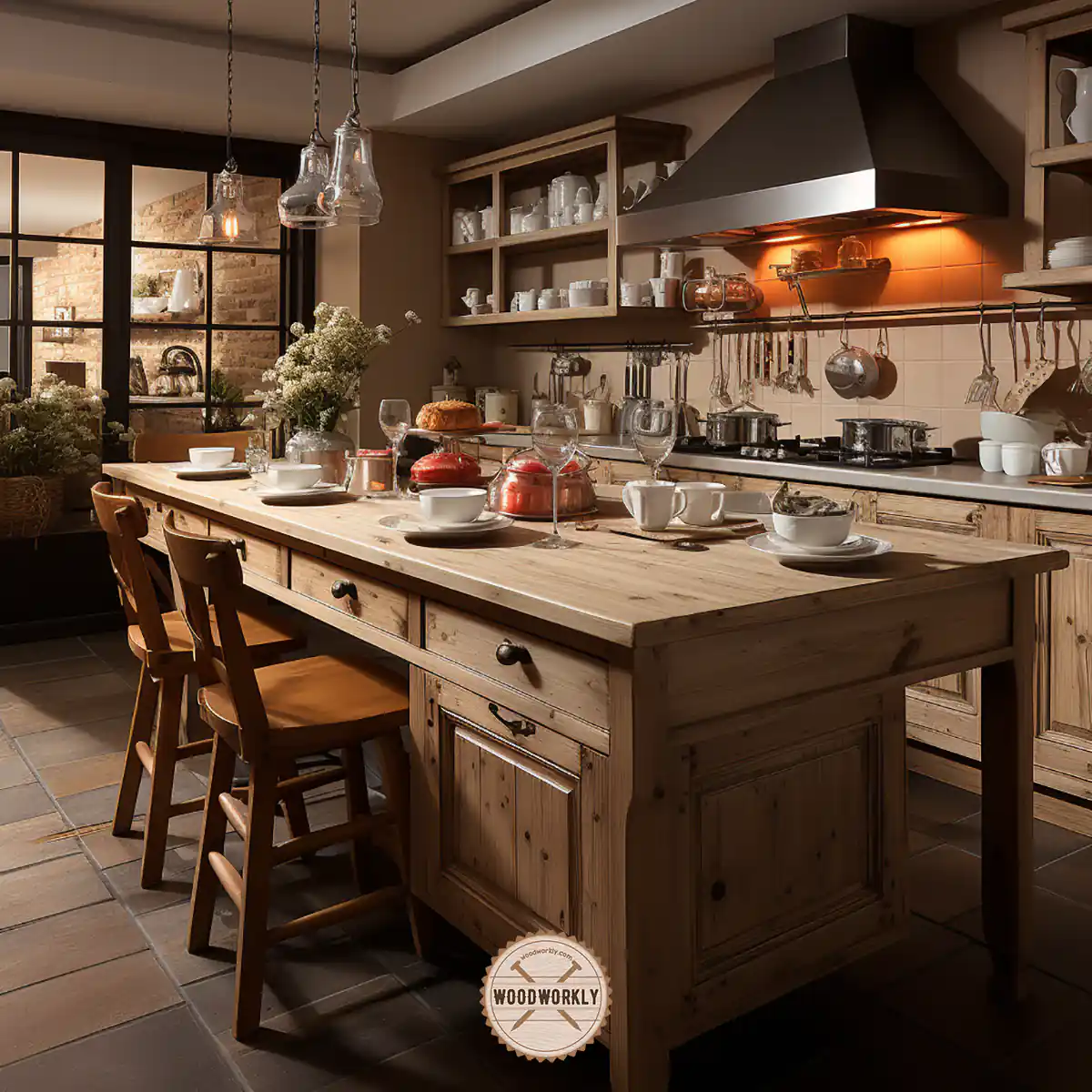
4. Apply the Danish Oil.
Apply a thin layer of Danish oil by using a clean, lint-free cloth in a circular motion along the wood grain direction until the wood no longer absorbs the oil.
When applying oil to large surface areas, use a high-quality brush for best results.
There are two techniques that can be used to apply Danish oil to pine wood.
The Wet-On-Wet Technique
Do you want to finish applying Danish oil within one day? Try this method.
It allows Danish Oil to be applied thoroughly in a single day and the wood to be ready to use within 48 hours. Here, you can apply Danish oil, while the previous coat is still wet.
Don’t need to fully dry between coats, therefore it takes less time.
The Smooth Finish Technique
In this technique, you need to apply thin multiple coats and sanding between coats in order to gain a smooth finish. For the complete process, you will require 3-5 days.
According to your preference, time allocation, and final finish you can choose the technique.

5. Allow Penetration Time.
Once the first coat, let it dry for about 20 minutes. You can identify the complete absorbance to the surface by the dull and not shining appearance.
6. Apply Multiple Coats.
Apply a second coat after setting the oil using the same cloth or rag. This coat will require less oil than the previous coat.
For the wet-on-wet technique, you can apply a second coat after a few minutes while in the smooth finish method keep overnight to dry in a warm room.
If you need to get a smooth finish you have to wait overnight for each coat to dry.
Also, it is necessary to sand lightly in between coats and clean the surface thoroughly before applying the next coat. This will give a smooth and elegant finish to your pine surface.
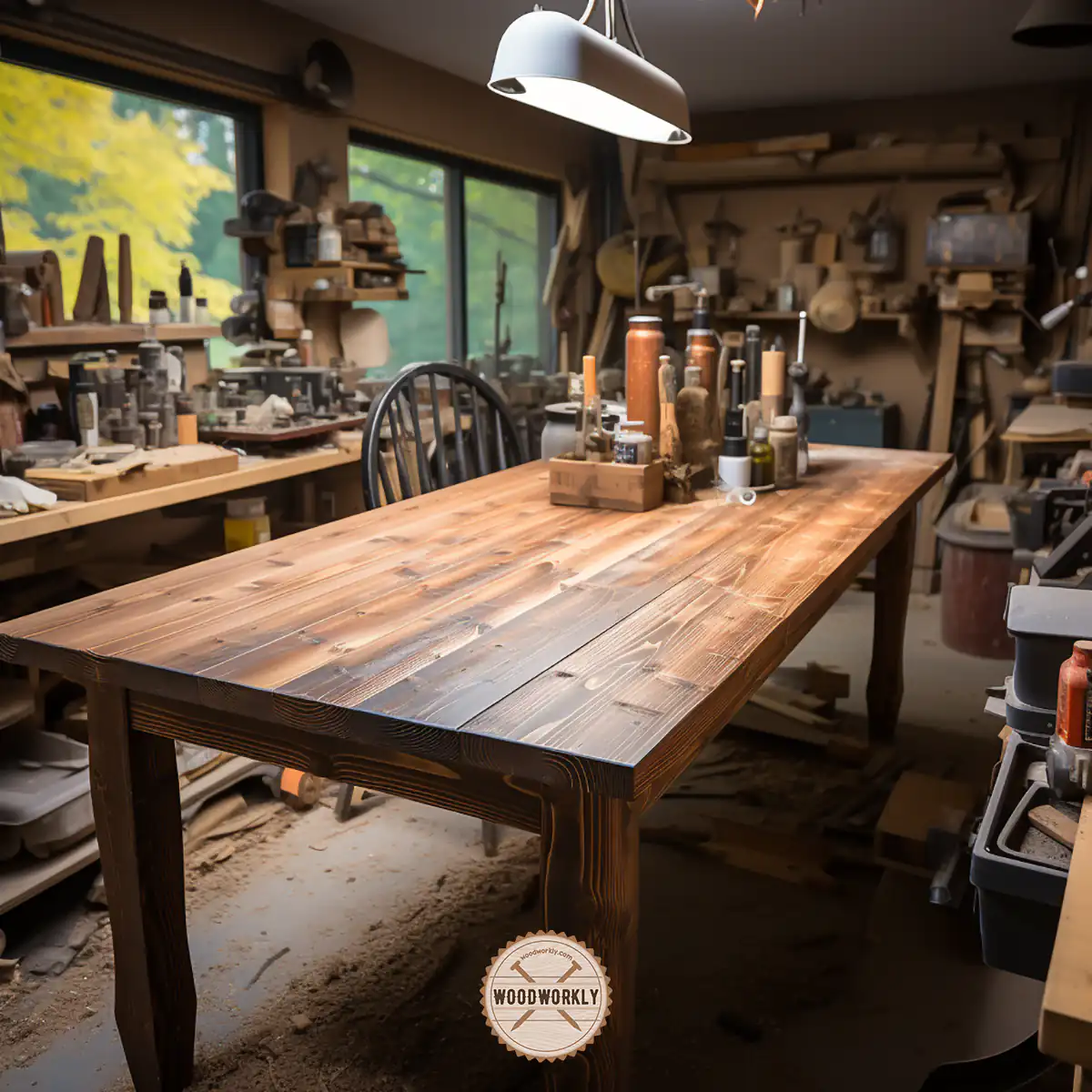
7. Wipe Off Excess Danish Oil.
Wipe away any extra oil with a clean cloth after each coat.
To avoid streaks or bubbles, wipe in the direction of the grain. Wipe away the excess oil to prevent it from gathering in the corners of the wood.
8. Drying and Curing.
Allow at least 48 hours for the final coat to dry.
Because the wet-on-wet process creates a thicker finish, it may take longer to dry than a single-coat application.
9. Buff off (optional).
For this, use 0000-grade steel wool or a soft cloth and apply in a circular manner along the grain direction to gain a silky smooth appearance.

Maintenance
The oil can wear away due to repeated touch. Therefore, re-applying the oil on the wood once or twice a year is sufficient to keep it fresh for another year.
If you feel a damaged area on the surface, gently sand the relevant area and reapply the Danish oil. No need to sand and reapply the whole area.
For daily maintenance, use light detergent and warm water. Heavy cleaners and chemicals will wipe away the oil.
Keep your Danish oiled pine away from direct sunlight, since this might cause the oil to dry and break the wood.
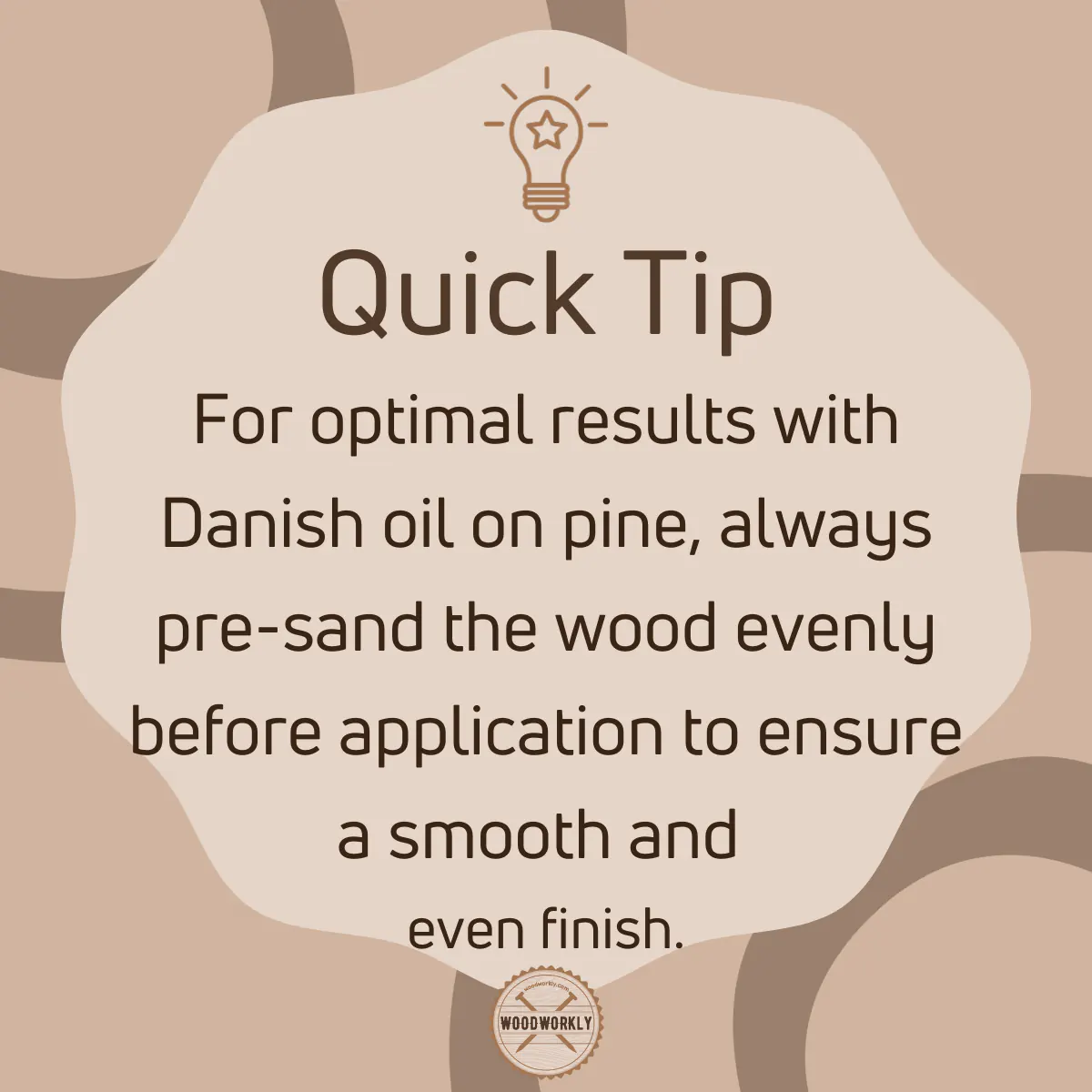
Tips for Using Danish Oil on Pine
Here are the simple tips I experienced for years for applying Danish oil to pine which will give successful results to you too.
- You need to choose the correct Danish oil type that suits your project. Because it is available in a variety of formulas, including various additives and drying agents. Some Danish oils are designed to dry quickly, while others may provide additional protection or specific aesthetics.
- When sanding the surface, sand along the direction of the grain to avoid scratches.
- Before using Danish oil on your whole surface area, test it on a small, inconspicuous area or a scrap piece of pine to see how it looks and how it interacts with the wood.
- Danish oil should always be applied in the direction of the wood grain. This helps to avoid bubbling and streaking while application.
- Apply thin, even coats. Excessive oil use can result in blotching or a sticky finish. Wipe off excess oil quickly with a cloth.
- Be patient and take your time to gain a smooth fine finish to your pine wood.

Best Danish oil Products to Use on Pine
There are different Danish oil brands available in the market and you can choose depending on your requirements, preferences, final look, etc.
Here are some Danish oil products that are most commonly used by experts.
Watco Danish Oil
Watco is a well-known brand for its Danish oil products. They have a variety of finishes including Natural, Dark Walnut, and Medium Walnut.
Watco Danish Oil is popular due to its ease of use and versatility.
Tried & True Danish Oil
Tried & True Danish Oil is made entirely of natural components, including linseed oil and beeswax.
It is an environmentally beneficial alternative because it doesn’t contain solvents, VOCs (volatile organic compounds), or hazardous chemicals.
This type is widely used by woodworkers to apply on raw wood or over an already stained wood.
Both brand types are suitable for indoor furniture.
Rustins Danish Oil
Rustins Danish oil has been one of the popular brands for decades. Provides a natural, low sheeny finish.
Therefore, it is not suitable for furniture that requires a high-gloss or more colorful finish.
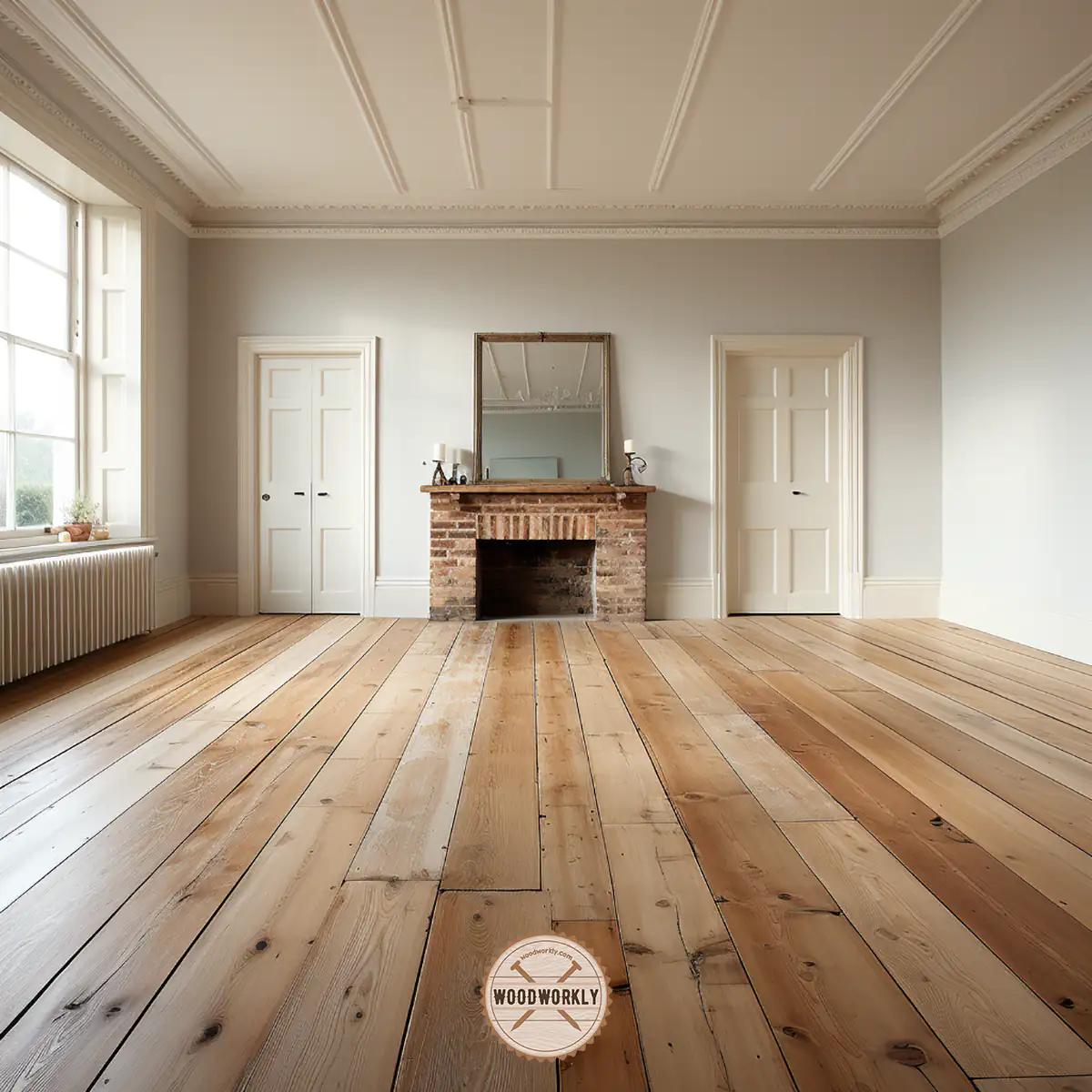
Benefits of Using Danish Oil on Pine
Pinewoods expand and contract in response to changes in moisture content.
Because of the great elastic property of Danish oil, once it applies to your pinewood, it can expand and contract without affecting the finish.
It can enhance the natural beauty of pine grain while making them water-resistant and stain-resistant.
It dries more quickly than other finishes.
Because pine is a softwood, it is readily destroyed by powerful chemicals. Therefore, it is important to use specifically designed Danish oil for pine.
Drawbacks of Using Danish Oil on Pine
This oil may make your wood furniture more stain-resistant, making painting more difficult.
Danish oil darkens the surface of pine wood as it penetrates the surface, thus it may not be suitable for your every furniture or project.
If you apply Danish oil it needs regular maintenance and then it is a very time-consuming process.
However, the advantages outweigh the disadvantages of applying Danish oil to pine.
Congrats folks! Now you have a crystal clear knowledge about using Danish oil on oine with benefits and application techniques.
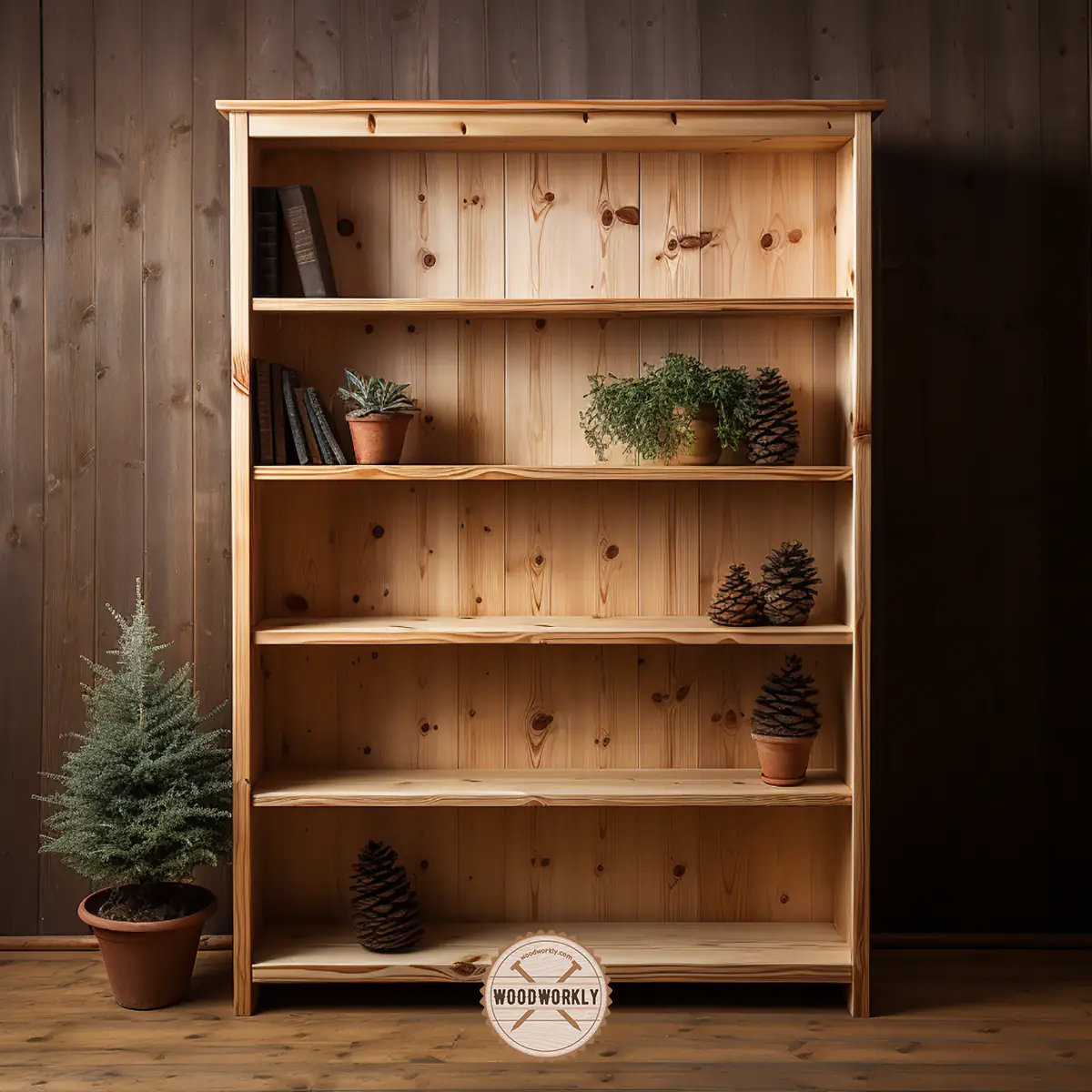
So, let’s answer some frequently asked questions.
FAQs
Is Danish oil a good finish for pine?
Yes, Danish oil provides a durable finish for pine wood, suitable for furniture, flooring, paneling, and cabinetry, offering both protection and aesthetic appeal.
Does Danish oil darken pine wood?
Danish oil, being a penetrating finish, can slightly darken wood, including pine; those made with tung oil will darken less than linseed oil versions.
Can you use Danish oil over stain?
While Danish oil works better under most stains, it can penetrate wood through the stain, but the characteristic ‘wet’ appearance of the oil may not be evident.
Is it possible to apply Danish oil over varnish?
It’s not recommended to apply Danish oil over varnish, but varnish can be applied over Danish oil for enhanced protection.
Does Danish oil protect wood from water?
Yes, Danish oil can polymerize into a solid form when exposed to oxygen, offering an almost waterproof finish that protects wood, including pine, from moisture damage.
Which brand of Danish oil is recommended?
One of the top-rated brands is Tried and True Danish Oil, which offers a superior penetrating linseed oil finish for interior woodwork and furniture.
Is Danish oil suitable for outdoor use?
Yes, Danish oil is effective for protecting outdoor wood furniture, offering water, food, and alcohol resistance with a semi-gloss, low-sheen finish.
How do you thin Danish oil?
Danish oil can be further thinned using solvents such as turpentine, allowing for adjustable finish build-up.
How is Danish oil applied to pine wood?
Danish oil can be applied to clean, pre-sanded pine wood using techniques like the Wet-On-Wet or the Smooth Finish Technique, ensuring layers are allowed to dry adequately between applications.
Did I cover all you wanted to know about: Using Danish Oil on Pine
In this article, I’ve deeply discussed whether can you use Danish oil on pine and how to use it properly without messing things up.
Danish oil on pine provides a durable and aesthetic finish, ideal for furniture and cabinetry. Made from tung or linseed oil, it hardens upon exposure to oxygen. While it slightly darkens the wood, it offers protection against moisture and retains the natural appearance of pine.
Plus, I’ve answered some frequently asked questions as well.
Hope you learned everything you wanted to know about, using Danish oil on pine. Now it’s time to give the process you learned a try! Happy wood finishing!